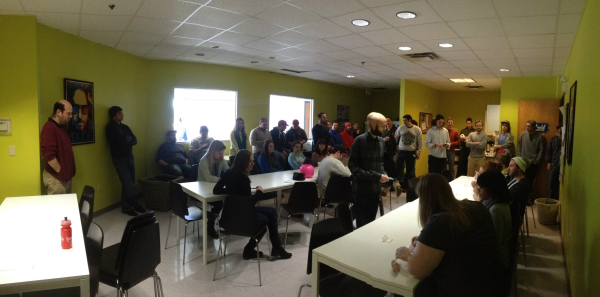 A word I have seen pop all over the business blogsphere these days is “gamification.” Gamification in the workplace in the simplest of definitions is making a game out of employees' day-to-day activities. In the various articles I have read on the topic, the opinions seem to be split on the overall effectiveness of gamification. Farhad Manjoo of The Wall Street Journal feels that it has the “potential for stifling creativity and flexibility in the workplace, and the growing sensation of being watched, and measured, in everything we do.” Others believe that creating a game out of an everyday work task increases competition and therefore productivity. Now I can’t speak for the larger companies (the AMEXes, IBMs and Googles of the world) who leverage a gamification strategy to increase productivity, but I can say that at AG we like to keep it simple and effective. I’ll share with you an example.
A word I have seen pop all over the business blogsphere these days is “gamification.” Gamification in the workplace in the simplest of definitions is making a game out of employees' day-to-day activities. In the various articles I have read on the topic, the opinions seem to be split on the overall effectiveness of gamification. Farhad Manjoo of The Wall Street Journal feels that it has the “potential for stifling creativity and flexibility in the workplace, and the growing sensation of being watched, and measured, in everything we do.” Others believe that creating a game out of an everyday work task increases competition and therefore productivity. Now I can’t speak for the larger companies (the AMEXes, IBMs and Googles of the world) who leverage a gamification strategy to increase productivity, but I can say that at AG we like to keep it simple and effective. I’ll share with you an example.
When I was a child, getting me to do chores (most often cleaning my room) was a constant struggle for my mother. She would threaten to take things away, ground me from having friends over -- anything to compel me to clean my room. This changed, however, when my grandmother came over one night to babysit. She took a rainbow baton (“fairy wand”) and tapped all the items that needed to be put away. In no time at all, my bed was made, toys were put away, and chores were completed. When I was a nanny for a brief time years later, I employed the same strategy and it always worked like a charm.
Now I am not trying to draw a comparison between children and inside sales reps but that idea of taking something mundane and making a game out of it is compelling in increasing productivity. I think the key is to keep it simple. We have been using games/competitions at AG since before my time here, and I am glad to now be a part of the continuation of that part of our culture. Along with the other managers we try to follow a few simple guidelines when applying gamification strategies to AG:
1. Establish which KPIs are most important to track. Then, create different games to address each of these KPIs to mix it up and keep things fresh. For the operations team, we look at 10 or more metrics on a daily/weekly/monthly basis, including but not limited to: leads passed, quality conversations, connect rate, emails and voicemails sent, etc. Changing up which metric we will be focusing on any given week keeps inside sales reps on their toes.
2. Keep the goal attainable for all. One of the realities we face in a client service organization is that each client is different and could be varying in level of difficulty in regards to a specific metric we’re tracking. In these cases, when we run a contest over a course of a week, we’ll often have qualifying rounds so we measure a number of different metrics to accommodate for inside sales reps' client-specific challenges.
3. Vary how the winner is selected and keep it fun. Sometimes we like to give a reward based purely on performance. For example, “the inside sales rep that has the most leads this week wins xyz prize.” Given the diversity of clients, we prefer contests in which people have the ability to qualify based on a variety of factors and 5-10 reps can compete. When it comes to the actual game, we have one rule and that is to keep it fun. “Minute to win it” type games on a Friday at lunch are a big hit amongst inside sales reps. We’ve done “AG Trivia,” Jeopardy, Jenga, and last week we had reps throw darts at balloons containing dollar amounts.
We understand at AG that cold calling is difficult and eventual burn out is inevitable without a change of pace. What the management team strives to do is to create an atmosphere where not only the contestants are excited to compete but fellow employees are excited to watch and become more productive next week.

Kim Staib, a Manager of Client Operations for AG, has been working here since May 2011. She is actively involved in the recruitment and training team. She is also responsible for managing client relationships, completing daily reporting and project analytics, and planning strategic marketing campaigns. Read her articles here.








 Follow us
Follow us Like us
Like us Add us
Add us Connect to us
Connect to us Follow us
Follow us